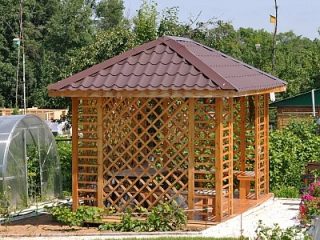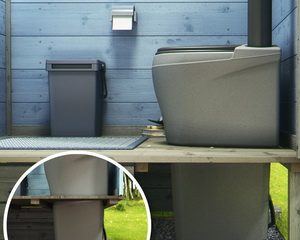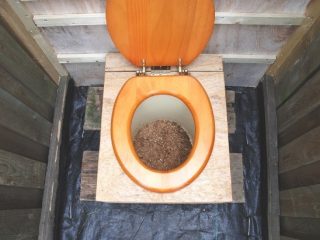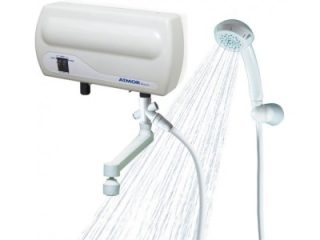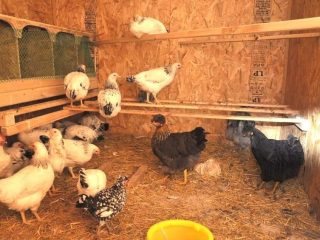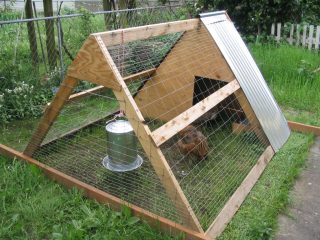Content
Living outside the city without the usual city amenities does not seem comfortable. In the absence of a central sewerage system, it becomes necessary to equip a system for draining wastewater. You can make cesspools, but this is not environmentally friendly, and the volume of wastewater increases with the level of comfort, which means constant pumping is required with a sewer truck. Septic tanks have completely changed the approach. These are systems that process wastewater in such a way that it can subsequently be used for technical needs. In the article we will look at the types of septic tanks, and also analyze how to choose a septic tank for a country house.
Types of septic tanks and the principle of their operation
A septic tank is a sealed container in which wastewater is collected and treated. Facilities differ in design, pollution processing technologies and degree of purification.
Drives
These containers do not apply to septic tanks, since they do not purify wastewater. These are waterproof tanks for collecting sewage waste. As the chamber fills, it must be pumped out using a sewer truck. Made from concrete, plastic or fiberglass.
In essence, storage tanks are an analogue of a cesspool, a well for dumping waste.
Advantages of the structure:
- does not require the installation of a post-treatment system, for example, a filtration field, which takes up a lot of space;
- resistant to volley discharges: the volume of simultaneously arriving wastewater from different plumbing fixtures;
- can be installed on any type of soil and at high groundwater levels;
- non-volatile, autonomous.
Minuses:
- needs regular and timely pumping of wastewater;
- volume restrictions.
It is advisable to install such systems in a country house or in a country house where no one lives permanently or where there are few amenities, that is, when the volume of wastewater is small.
Septic tanks
Structures of 2 or more chambers, in each of which wastewater treatment occurs. Based on the design features, up to 50 - 65% of contaminants are recycled. Purification principle: separation of liquid and solid components under the influence of gravity, accompanied by fermentation with the help of anaerobes. To increase the number of bacteria in the septic tank, a biofilter with brushes or a floating load is installed.
Since the wastewater is poorly purified, after the septic tank it must be sent to the soil treatment system.
Advantages of a septic tank:
- recycles waste up to 65%;
- variety of designs for different budgets;
- works without connecting to the electrical network.
Minuses:
- not suitable for installation in areas with high groundwater levels and water-resistant soils;
- it is necessary to clean the receiving chamber from accumulated sludge annually;
- with additional post-treatment systems, it occupies a larger area;
- During the fermentation process, methane and hydrogen sulfide are released, and the smell may be present near the treatment plant.
The septic tank is suitable for any type of residence, incl. visits.This is a suitable sewer option for areas with unstable electricity. But, for the installation of a non-volatile septic tank there must be enough free space and permeable soil without stagnant water.
Aeration septic tanks
They are also called deep biopurification systems.
Such a septic tank includes 3-7 chambers in which wastewater is treated mechanically, chemically and biologically. The output is odorless process water that does not require additional purification. The high efficiency of the system is ensured by the vital activity of aerobic microorganisms, which arise due to the presence of oxygen. An aeration septic tank can be installed in any type of soil.
One of the most popular aeration units is Eurolos PRO.
This is a vertical cylindrical container made of homogeneous polypropylene with a neck and an insulated lid. The body is divided by partitions into four compartments. The sections are sequentially connected to each other by overflows and pumping equipment. Let's take a closer look at what each compartment is responsible for:
- The first is a receiving compartment for the primary deposition of contaminants.
- The second is an anaerobic chamber with an airlift that redirects wastewater to the third section, and a coarse filter that filters out medium-sized fractions.
- The third is an aeration tank with a special cassette necessary for immobilizing bacteria. Air from the compressor is supplied to this chamber, due to which organic contaminants are oxidized by activated sludge, decomposing into simple substances.
- The fourth is a secondary settling tank for separating water and sludge. The settled sludge is pumped by airlift into the aeration tank and receiving chamber, ensuring wastewater recirculation. Purified water is removed by gravity or forced by a pump outside the station. For example, in a drainage ditch.
Advantages of an aerated septic tank:
- compact dimensions - the same Eurolos Pro is buried in the ground, and only a lid with a diameter of 1 m remains on the surface;
- does not require installation of post-treatment facilities;
- the biorefinery station must be pumped out 1-2 times a year;
- variety of designs: vertical, horizontal, with or without a compressor, pump, electronics;
- can be installed on problematic soils.
Minuses:
- works in the presence of electricity;
- restrictions on what can be discharged into the sewer (certain household chemicals kill aerobes);
- Equipment maintenance is required every 3-12 months.
An aerated septic tank is the best option for a home designed for permanent residence. If there is an irregular flow of wastewater, the station will take a long time to reach normal operating conditions. However, there are pump treatment systems, for example, Eurolos Bio, which are suitable for dacha living.
Which one is better for a private home?
There is homemade and factory equipment. The choice of the former is sometimes justified, but they have disadvantages. It is simply impossible to assemble a technically complex structure that provides a high degree of purification with your own hands.
Self-made septic tanks are often storage tanks. They are made from concrete rings, monolithic concrete, and brick. Sometimes the storage is made from tires, or they simply dig a hole. But such structures pollute the site and groundwater.
If you need a sealed and reliable design that cleans wastewater efficiently, the choice should be made in favor of a factory septic tank: a polyethylene, polypropylene or fiberglass container. The choice depends on individual needs, site characteristics, budget and other factors.In order not to understand all the nuances yourself, it is easier to seek advice from specialists.
What are the criteria for choosing the right septic tank for a private home?
Which septic tank is better cannot be said unambiguously; there are options for different purposes. When choosing, you need to consider the following factors:
- number of people living, permanently or seasonally;
- what is the type of soil on the site;
- area and development of the site;
- at what depth is the groundwater located?
- where can purified water be discharged?
- region.
If a sedimentation tank is installed, you cannot do without hydrogeological surveys, which will determine the type of soil and the depth of groundwater. It is also necessary to additionally equip soil treatment systems. The situation is simplest with biorefinery stations - you just need to bury them in the ground.
When choosing the volume of a septic tank, you need to make calculations.
According to water consumption standards, one person spends about 200 liters per day. On average, wastewater stays in treatment facilities for three days; accordingly, the volume is selected based on the needs of residents in three times the amount.
Example calculation for a family of three: 3 × 200l x 3 days = 1.8 m3.
It is recommended to add 25 - 30% to the result so that the septic tank can cope with its work even if guests arrive. For convenience, manufacturers of factory models indicate the number in the marking, for example, Eurolos PRO 4.
Conclusion
If the house is used occasionally or there are no other amenities besides the toilet, a storage tank will suffice, and you can assemble it with your own hands. For a permanent home, the best option is a biological treatment station.A septic tank, retrofitted with a wastewater treatment system, is also suitable if the site conditions are suitable for its placement.




